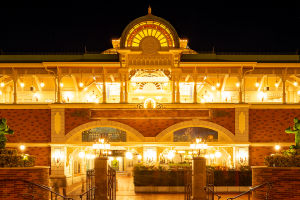Have you ever felt the pull of history as you walk through an ancient monument?
That's exactly what the Colosseum offers—a tangible connection to the past. But crowds, confusing tickets, and missed viewpoints can turn your visit into a blur. Let's break it down so you can enjoy every step of this iconic structure.
Mastering Tickets: What to Buy and Where
Start by securing the right ticket—you don't want to overpay or arrive and find your preferred access has sold out. Standard entry costs €16 + €2 booking fee, which includes the Colosseum, Roman Forum, Palatine Hill, and Imperial Fora. For a deeper experience, the Full Experience ticket (€24) adds access to the Arena floor and Underground level.
You can also opt for the Attic-level ticket (€24) to explore the newly restored upper tier. Guided or backstage tours range from €23 to €34 and include expert commentary.
Booking through the official site is essential. Tickets can sell out fast, so set a reminder to book exactly 30 days before your visit. Getting the Full Experience pass early is especially wise, since that access is limited and highly competitive.
Beat the Lines: Timing Is Everything
Avoid the typical tourist rush by following these simple timing tips. Visit in the early afternoon—between 1 p.m. and 3 p.m.—when local tour buses have moved on, and the site is quieter. Pick a weekday and steer clear of weekends or holidays. If you're flexible, check for nighttime guided tours which offer a hauntingly beautiful way to experience the Colosseum under artificial lighting, with fewer visitors.
Don't Miss These Key Areas
nothing beats standing on the Arena floor, where gladiators once competed, or venturing into the Underground hypogeum to explore the hidden labyrinth that lies beneath. The Attic—recently reopened for visitors—offers spectacular panoramic views over Rome's skyline, framing the amphitheater in a fresh light.
Walk around the outer wall to appreciate ancient engineering up close, then finish in the Roman Forum and on Palatine Hill to understand how the Colosseum fit into daily life and governance during the empire's peak.
Guided vs. Self-Guided: Choose Your Experience
Guided tours, especially those that include the Underground, can illuminate the Colosseum's secrets—like the amazing engineering feats and the stories of the people who built and used it. Many visitors rave about the official Underground tours, calling them the best tour they've ever been on. If you prefer freedom, rent an audio guide (€5–€6), which offers insightful commentary and lets you explore at your own pace. Aim to arrive 15–30 minutes early to clear security and start promptly.
Capture the Best Shots
For iconic exterior photos, stand in Piazza del Colosseo during the golden afternoon light. Inside, frame the arches from the lower seating level to achieve that cinematic vibe with the Roman Forum in the background. And don't forget to step up to Palatine Hill—its views offer a sweeping vista of the Colosseum gilded against the city.
Getting There and Nearby Essentials
The easiest way to reach the Colosseum is via Metro Line B—get off at "Colosseo" station and you'll emerge steps from the entrance. Bus routes 75, 81, 673, and 175 also serve the area. Public restrooms are available near the ticket office (pro tip: use them before entering). Drinking fountains inside let you refill your water bottle throughout your visit. For snacks or a lunch break, there's a café on-site, though you'll find better options around the neighborhood near the Forum.
Where to Stay Close By
For easy access, consider staying near the Colosseum. Budget travelers can choose Hotel Colosseum (around €80/night) for simple, no-frills comfort. Mid-range stays like Mercure Roma Colosseo (~€150/night) offer a rooftop terrace with views. If you're celebrating a special trip, Palazzo Manfredi (next to the Colosseum, €400 to €800/night) combines luxury rooms and rooftop dining with direct views of the monument.
Exploring the Colosseum can be magical when done right—you'll walk its ancient stones not just as a visitor, but as someone truly connected to history. Have you ventured under the Arena or climbed the Attic? Share your best memory or photo tip; I'd love to hear about your adventure!


